Given an approximate starting point, you could use a simple algorithm that finds a local maxima closest to this point. Your fitting code may be doing that already (I wasn't sure whether you were using it successfully or not).
Here's some code that demonstrates simple peak finding from a user-given starting point:
#!/usr/bin/env python
from __future__ import division
import numpy as np
from matplotlib import pyplot as plt
# Sample data with two peaks: small one at t=0.4, large one at t=0.8
ts = np.arange(0, 1, 0.01)
xs = np.exp(-((ts-0.4)/0.1)**2) + 2*np.exp(-((ts-0.8)/0.1)**2)
# Say we have an approximate starting point of 0.35
start_point = 0.35
# Nearest index in "ts" to this starting point is...
start_index = np.argmin(np.abs(ts - start_point))
# Find the local maxima in our data by looking for a sign change in
# the first difference
# From http://stackoverflow.com/a/9667121/188535
maxes = (np.diff(np.sign(np.diff(xs))) < 0).nonzero()[0] + 1
# Find which of these peaks is closest to our starting point
index_of_peak = maxes[np.argmin(np.abs(maxes - start_index))]
print "Peak centre at: %.3f" % ts[index_of_peak]
# Quick plot showing the results: blue line is data, green dot is
# starting point, red dot is peak location
plt.plot(ts, xs, '-b')
plt.plot(ts[start_index], xs[start_index], 'og')
plt.plot(ts[index_of_peak], xs[index_of_peak], 'or')
plt.show()
This method will only work if the ascent up the peak is perfectly smooth from your starting point. If this needs to be more resilient to noise, I have not used it, but PyDSTool seems like it might help. This SciPy post details how to use it for detecting 1D peaks in a noisy data set.
So assume at this point you've found the centre of the peak. Now for the width: there are several methods you could use, but the easiest is probably the "full width at half maximum" (FWHM). Again, this is simple and therefore fragile. It will break for close double-peaks, or for noisy data.
The FWHM is exactly what its name suggests: you find the width of the peak were it's halfway to the maximum. Here's some code that does that (it just continues on from above):
# FWHM...
half_max = xs[index_of_peak]/2
# This finds where in the data we cross over the halfway point to our peak. Note
# that this is global, so we need an extra step to refine these results to find
# the closest crossovers to our peak.
# Same sign-change-in-first-diff technique as above
hm_left_indices = (np.diff(np.sign(np.diff(np.abs(xs[:index_of_peak] - half_max)))) > 0).nonzero()[0] + 1
# Add "index_of_peak" to result because we cut off the left side of the data!
hm_right_indices = (np.diff(np.sign(np.diff(np.abs(xs[index_of_peak:] - half_max)))) > 0).nonzero()[0] + 1 + index_of_peak
# Find closest half-max index to peak
hm_left_index = hm_left_indices[np.argmin(np.abs(hm_left_indices - index_of_peak))]
hm_right_index = hm_right_indices[np.argmin(np.abs(hm_right_indices - index_of_peak))]
# And the width is...
fwhm = ts[hm_right_index] - ts[hm_left_index]
print "Width: %.3f" % fwhm
# Plot to illustrate FWHM: blue line is data, red circle is peak, red line
# shows FWHM
plt.plot(ts, xs, '-b')
plt.plot(ts[index_of_peak], xs[index_of_peak], 'or')
plt.plot(
[ts[hm_left_index], ts[hm_right_index]],
[xs[hm_left_index], xs[hm_right_index]], '-r')
plt.show()
It doesn't have to be the full width at half maximum — as one commenter points out, you can try to figure out where your operators' normal threshold for peak detection is, and turn that into an algorithm for this step of the process.
A more robust way might be to fit a Gaussian curve (or your own model) to a subset of the data centred around the peak — say, from a local minima on one side to a local minima on the other — and use one of the parameters of that curve (eg. sigma) to calculate the width.
I realise this is a lot of code, but I've deliberately avoided factoring out the index-finding functions to "show my working" a bit more, and of course the plotting functions are there just to demonstrate.
Hopefully this gives you at least a good starting point to come up with something more suitable to your particular set.
